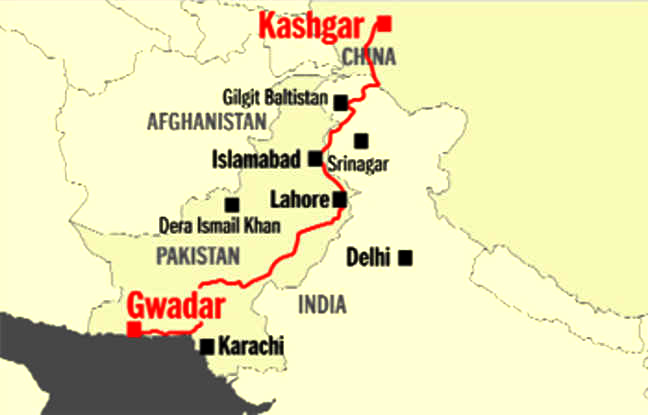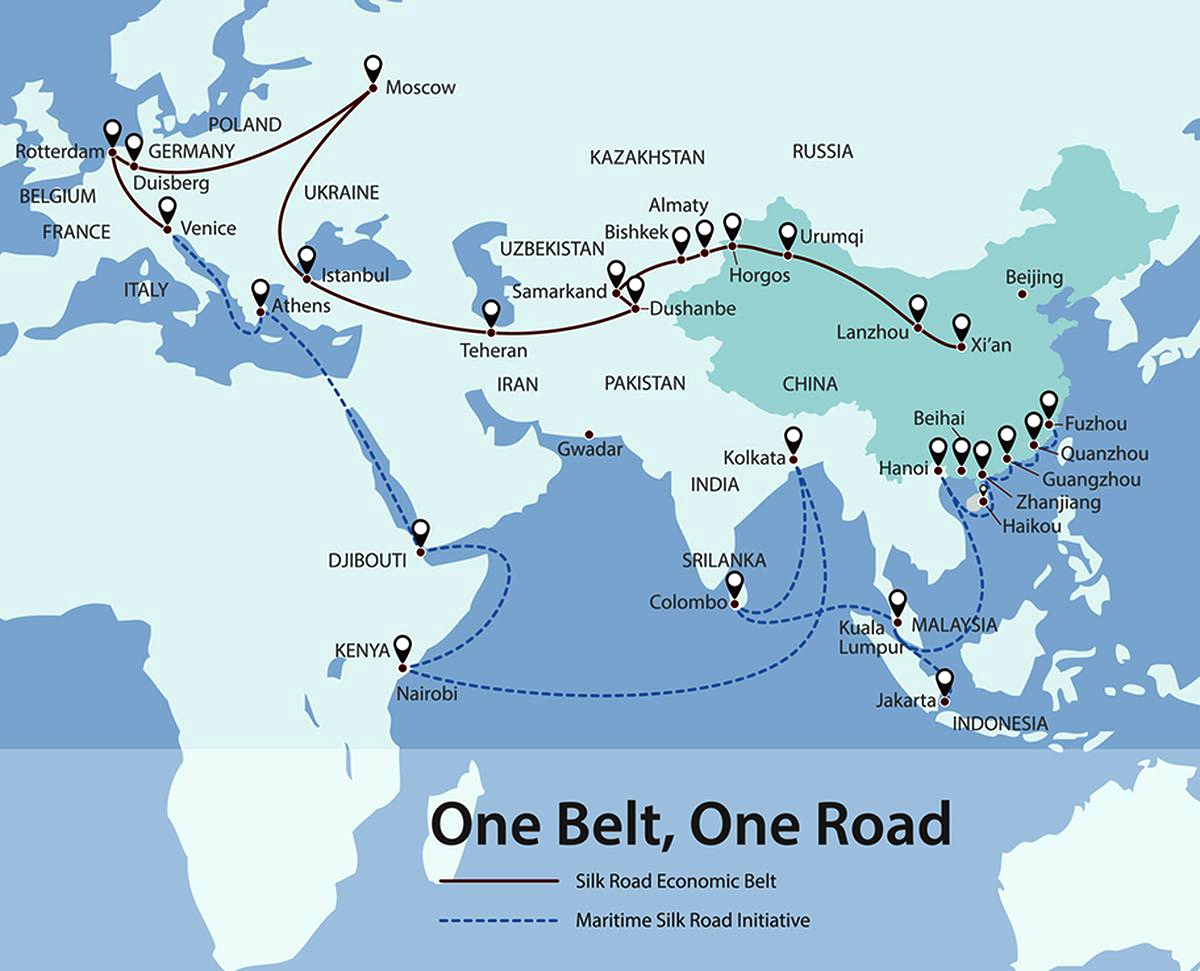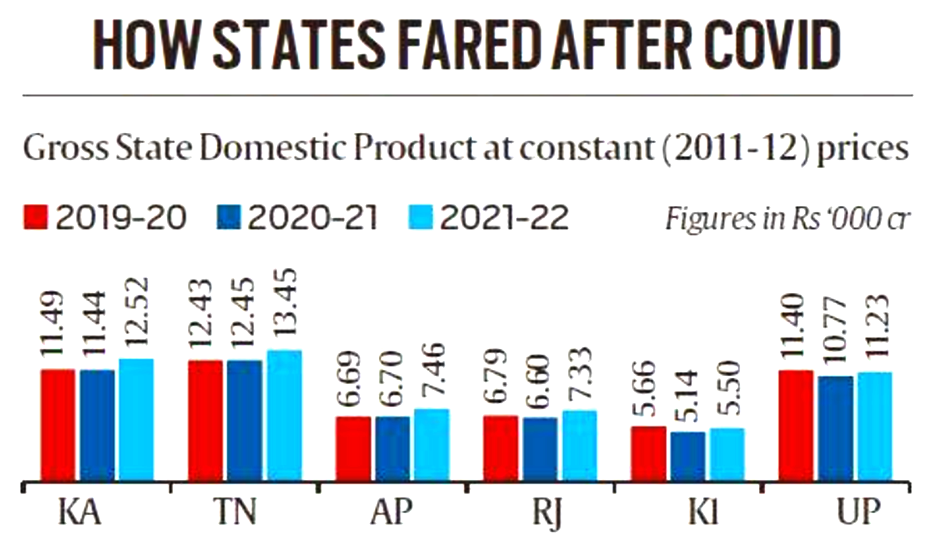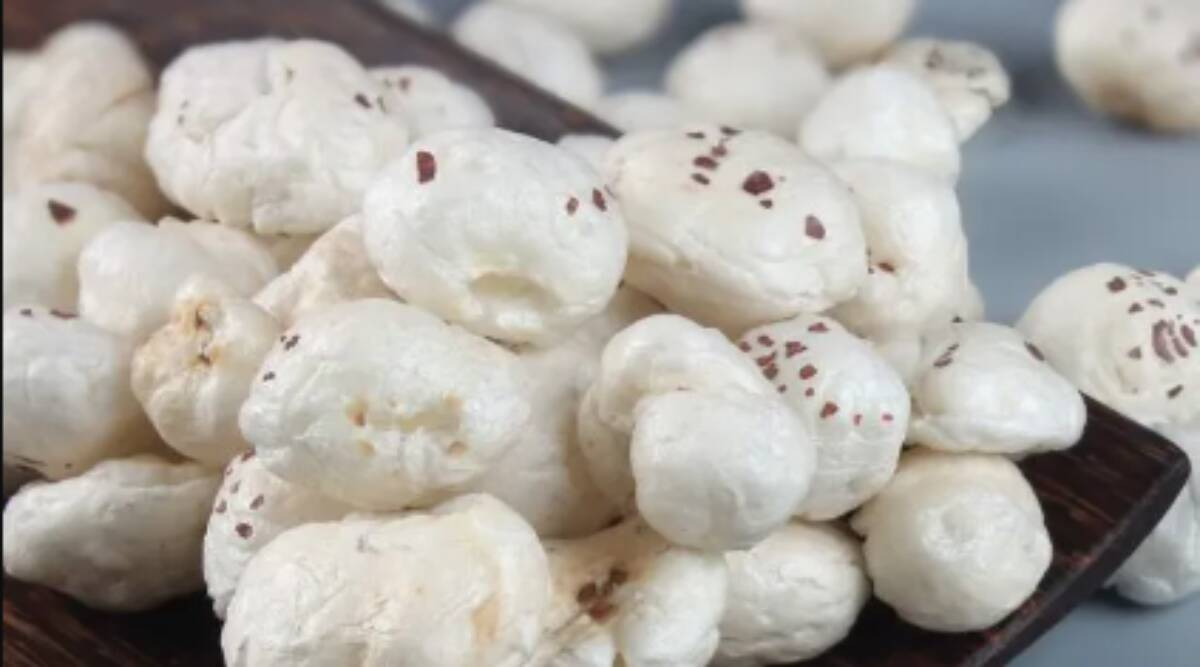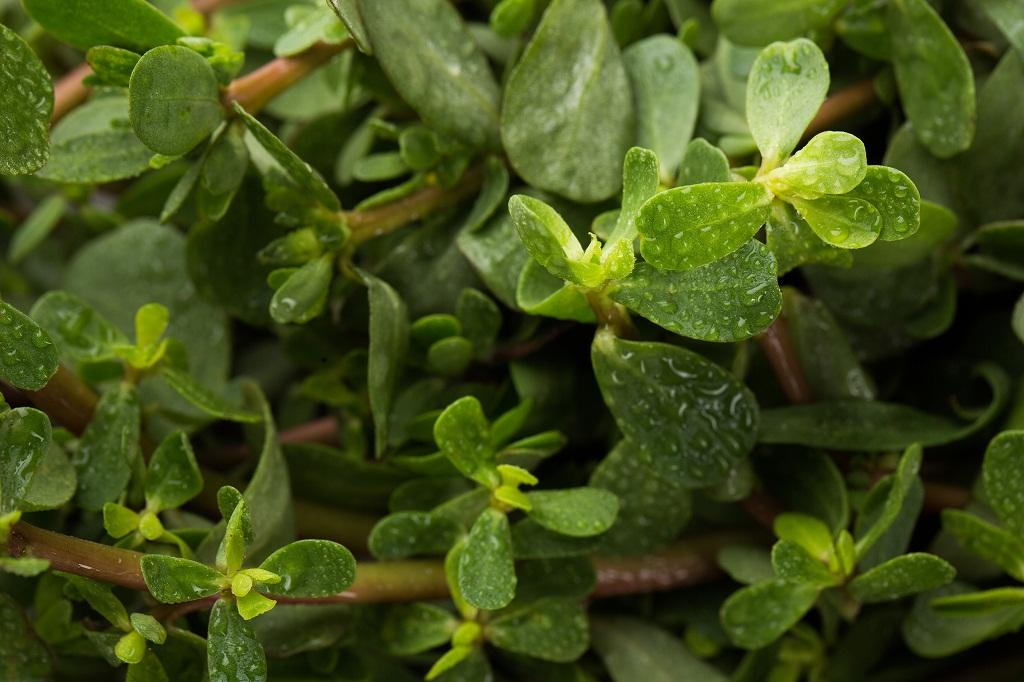Infographics
Biodiversity & Environment
Forever Chemicals
For Prelims: Per- and Polyfluoroalkyl Substances (PFAs), Forever chemicals, Incineration, Supercritical Water Oxidation, Plasma Reactors
For Mains: Impacts of Environment Pollutants on Human body
Why in News?
According to a recent study, scientists have found that rainwater from many places across the globe is contaminated with Per- and Polyfluoroalkyl Substances (PFAs).
- Further, they are called Forever chemicals because of their tendency to stick around in the atmosphere, rainwater, and soil for long periods of time.
- PFAs are also listed in the Stockholm Convention.
What is Stockholm Convention?
- About:
- It is a global treaty to protect human health and the environment from persistent organic pollutants (POPs). POPs are chemicals that remain intact in the environment for long periods, become widely distributed geographically, accumulate in the fatty tissue of living organisms and are toxic to humans and wildlife.
- Objectives:
- Support the transition to safer alternatives.
- Target additional POPs for action.
- Clean up old stockpiles and equipment containing POPs.
- Work together for a POPs-free future.
- India ratified the Stockholm Convention in 2006 as per Article 25(4), which enabled it to keep itself in a default "opt-out" position such that amendments in various Annexes of the convention cannot be enforced on it unless an instrument of ratification/ acceptance/ approval or accession is explicitly deposited with UN depositary.
What are Per- and Polyfluoroalkyl Substances (PFAs)?
- About:
- They are man-made chemicals used to make nonstick cookware, water-repellent clothing, stain-resistant fabrics, cosmetics, firefighting forms, and many other products that resist grease, water, and oil.
- They can migrate to the soil, water, and air during their production and use.
- Most PFAs do not break down, they remain in the environment for long periods of time.
- Further, some of these PFAs can build up in people and animals if they are repeatedly exposed to the chemicals.
- Harmful Effects:
- They cause a variety of health risks that are attributed to PFA exposure, including decreased fertility, developmental effects in children, interference with body hormones, increased cholesterol levels, and increased risk of some cancers.
- Recent research has also revealed that long-term low-level exposure to certain PFAs can make it difficult for humans to build antibodies after being vaccinated against various diseases.
- They cause a variety of health risks that are attributed to PFA exposure, including decreased fertility, developmental effects in children, interference with body hormones, increased cholesterol levels, and increased risk of some cancers.
What can be done to Remove these Chemicals?
- Incineration:
- The most common method of destroying PFAS is incineration, but most PFAS are remarkably resistant to being burned. That’s why they’re used in firefighting foams.
- PFAS has multiple fluorine atoms attached to a carbon atom, and the bond between carbon and fluorine is one of the strongest.
- Normally to burn something, you have to break the bond, but fluorine resists breaking off from carbon.
- Most PFAS will break down completely at incineration temperatures around 1,500 degrees Celsius (2,730 degrees Fahrenheit), but it’s energy intensive and suitable incinerators are scarce.
- Supercritical Water Oxidation:
- Scientists have developed supercritical water oxidation to destroy PFAS.
- High temperatures and pressures change the state of water, accelerating chemistry in a way that can destroy hazardous substances.
- Scientists have developed supercritical water oxidation to destroy PFAS.
- Plasma Reactors:
- Researchers are working with plasma reactors, which use water, electricity, and argon gas to break down PFAS.
- Filtration System:
- Filtration system can be used with activated carbon in the rain water harvesting system.
- The activated carbon will need to be removed and replaced regularly. Also, the old contaminated material must be destroyed.
- Filtration system can be used with activated carbon in the rain water harvesting system.
- There are several other experimental techniques that are promising but haven’t been scaled up to treat large amounts of the chemicals.
UPSC Civil Services Examination Previous Year Question (PYQ)
Q. Which of the following can be found as pollutants in the drinking water in some parts of India? (2013)
- Arsenic
- Sorbitol
- Fluoride
- Formaldehyde
- Uranium
Select the correct answer using the codes given below:
(a) 1 and 3 only
(b) 2, 4 and 5 only
(c) 1, 3 and 5 only
(d) 1, 2, 3, 4 and 5
Ans: c
Exp:
- Drinking water in some parts of India have contaminants like Arsenic and Fluoride.
- The sources of arsenic include run off from orchards, metal smelting among others. Hence, 1 is correct.
- The sources of Fluoride are erosion of natural deposits, discharge from fertilizers and Aluminium factories. Hence, 3 is correct.
- The drinking water in some parts of India also contains traces of Uranium. The main source of the Uranium contamination is natural, but human factors such as groundwater-table decline and Nitrate pollution may exacerbate this problem. Hence, 5 is correct.
- Some naturally occurring elements in drinking water are Lead, Arsenic, Mercury, Radium, Chloride, Iron and Copper compounds. Most of these are not harmful when consumed in small quantities. But when the consumption is higher than the prescribed amount, it could be harmful and sometimes even fatal.
- Water in India is contaminated with salinity, Arsenic, Fluoride, Iron, Nitrate, and heavy metals.
- Sorbitol is a sugar alcohol found in fruits and plants with diuretic, laxative and cathartic property.
- Unabsorbed Sorbitol retains water in the large intestine through osmotic pressure, thereby stimulating peristalsis of the intestine and exerting its diuretic, laxative and cathartic effect.
- In addition, Sorbitol has one-third fewer calories and 60% the sweetening activity of sucrose and is used as a sugar replacement in diabetes. Hence, 2 is not correct.
- Formaldehyde is a colourless, strong-smelling gas used in making building materials and many household products. Formaldehyde quickly broken down in the air – generally within hours. It dissolves easily in water, but does not last long there, either. Hence, 4 is not correct.
- Therefore, option (c) is the correct answer.
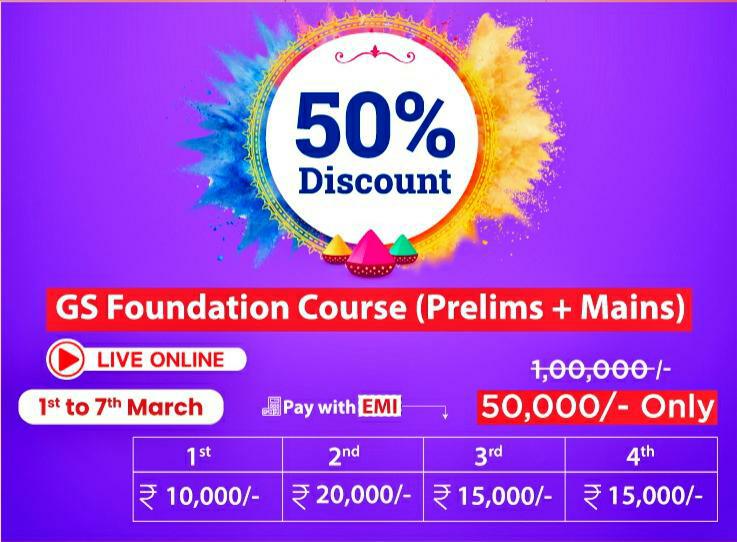
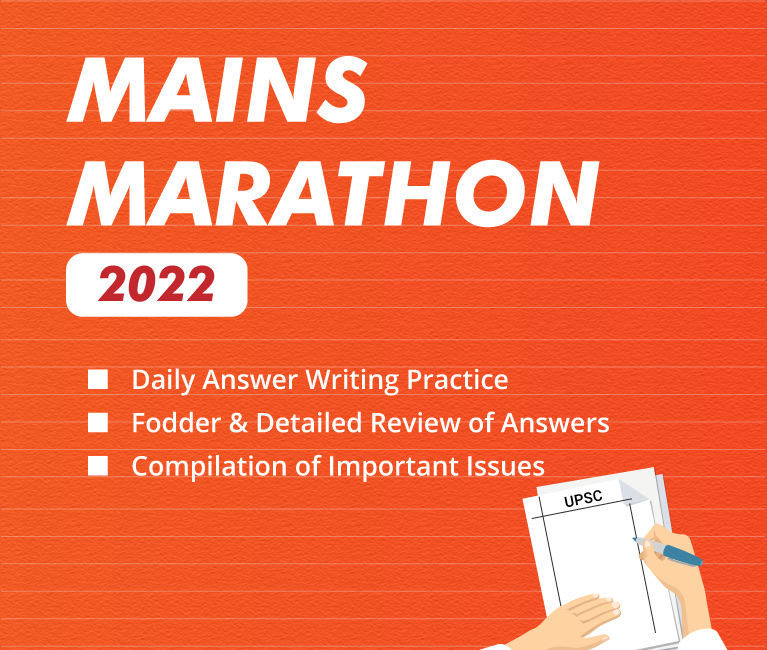
International Relations
CPEC Authority
For Prelims: China-Pakistan Economic Corridor (CPEC), One Belt One Road (OBOR)
For Mains: China-Pakistan Economic Corridor (CPEC) and its implications on India
Why in News?
Recently, China gave nod to Pakistan's decision to scrap the China-Pakistan Economic Corridor (CPEC) Authority amid reports of growing rift between the all-weather friends over the slow pace of the USD 60 billion project.
What do we know about the CPEC Authority?
- About:
- The China-Pakistan Economic Corridor (CPEC) Authority was established through an ordinance in 2019.
- It was aimed at accelerating the pace of CPEC-related activities, finding new drivers of growth, unlocking the potential of interlinked production networks and global value chains through regional and global connectivity.
- The China-Pakistan Economic Corridor (CPEC) Authority was established through an ordinance in 2019.
- Reasons for Suspension:
- Pakistan occupied Gilgit Baltistan has been witnessing a spurt in the local protest against the Pakistan Army over land issues.
- The local population is angry at the “land grabbing” spree of the army, all in the name of CPEC.
- In April 2022, three Chinese were killed in a suicide bombing in Karachi University by Baloch Liberation Army (BLA), which opposed China's investments in Balochistan.
- China is reportedly pressing Pakistan to permit the Chinese agencies to provide security for their personnel while Islamabad is resisting as it meant boots on the ground for Chinese armed forces.
- The CPEC projects were also facing delays because of the change in taxation policies by the last government in violation of commitments given to China.
- Pakistan occupied Gilgit Baltistan has been witnessing a spurt in the local protest against the Pakistan Army over land issues.
What is the China Pakistan Economic Corridor?
- About:
- CPEC is a 3,000-km long route of infrastructure projects connecting China’s northwest Xinjiang Uygur Autonomous Region and the Gwadar Port in the western province of Balochistan in Pakistan.
- It is a bilateral project between Pakistan and China, intended to promote connectivity across Pakistan with a network of highways, railways, and pipelines accompanied by energy, industrial, and other infrastructure development projects.
- It will pave the way for China to access the Middle East and Africa from Gwadar Port, enabling China to access the Indian Ocean and in return China will support development projects in Pakistan to overcome the latter’s energy crises and stabilising its faltering economy.
- CPEC is a part of the Belt and Road Initiative.
- The BRI, launched in 2013, aims to link Southeast Asia, Central Asia, the Gulf region, Africa and Europe with a network of land and sea routes.
- Concern for India:
- India’s Sovereignty:
- India has continuously opposed the project since it passes through the Pakistan-occupied Kashmir territory of Gilgit-Baltistan – a claim opposed by Pakistan.
- The corridor is also perceived to be an alternative economic road link for the Kashmir Valley lying on the Indian side of the border.
- Chinese Control Over Trade Via Sea:
- Major US ports on the East Coast depend on the Panama Canal to trade with China.
- Once CPEC becomes fully functional, China will be in a position to offer a ‘shorter and more economical’ trade route (avoiding travel through the entire Western Hemisphere) to most North and Latin American enterprises.
- This will give China the power to dictate the terms by which the international movement of goods will take place between the Atlantic and the Pacific oceans.
- Chinese String of Pearls:
- China has been increasing its presence in the Indian Ocean with the ‘String of Pearls’ ambition: A term coined by the Americans and often used by Indian defence analysts to refer to a Chinese game-plan of encircling India through a network of airfields and ports.
- With an existing presence in Chittagong port (Bangladesh), Hambantota port (Sri Lanka), Port Sudan (Sudan), Maldives, Somalia and Seychelles, a control of Gwadar port establishes complete dominance of the Indian ocean by the Communist nation.
- Stronger BRI and Chinese Dominance in Trade Leadership:
- China’s BRI project that focuses on the trade connectivity between China and the rest of Eurasia through a network of ports, roads and railways has been often seen as China’s plan to dominate the region politically.
- CPEC is one giant step in the same direction.
- China’s BRI project that focuses on the trade connectivity between China and the rest of Eurasia through a network of ports, roads and railways has been often seen as China’s plan to dominate the region politically.
- India’s Sovereignty:
What is One Belt One Road (OBOR)?
- About:
- One Belt One Road is a multi-billion-dollar initiative launched in 2013.
- It aims to link Southeast Asia, Central Asia, the Gulf region, Africa and Europe with a network of land and sea routes.
- It has been launched to undertake big infrastructure projects in the world which in turn would also enhance the global influence of China.
- Structure:
- It contain the following six economic corridors:
- The New Eurasian Land Bridge
- The China-Mongolia-Russia Corridor
- The China-Central Asia-West Asia Corridor
- The China-Indochina Peninsula Corridor
- The China-Pakistan Corridor
- The Bangladesh-China-India-Myanmar Corridor
- Additionally, the maritime Silk Road connects coastal China to the Mediterranean via Singapore-Malaysia, the Indian Ocean, the Arabian Sea, and the Strait of Hormuz.
- It contain the following six economic corridors:
UPSC Civil Services Examination Previous Year Question (PYQ)
Prelims
Q. Belt and Road Initiative’ is sometimes mentioned in the news in the context of the affairs of (2016)
(a) African Union
(b) Brazil
(c) European Union
(d) China
Ans: (d)
Exp:
- Proposed in 2013, the ‘Belt and Road Initiative (BRI)’ is an ambitious programme of China for connecting Asia with Africa and Europe via land and maritime networks.
- The BRI comprises a Silk Road Economic Belt – a trans-continental passage that links China with Southeast Asia, South Asia, Central Asia, Russia and Europe by land – and a 21st century Maritime Silk Road, a sea route connecting China’s coastal regions with Southeast and South Asia, South Pacific, Middle East and Eastern Africa, all the way to Europe. Therefore, option (d) is the correct answer.
Mains
Q. The China-Pakistan Economic Corridor (CPEC) is viewed as a cardinal subset of China’s larger ‘One Belt One Road’ initiative. Give a brief description of CPEC and enumerate the reasons why India has distanced itself from the same. (2018)
Q. China and Pakistan have entered into an agreement for the development of an economic corridor. What threat does this pose for India’s security? Critically examine. (2014)
Q. “China is using its economic relations and positive trade surplus as tools to develop potential military power status in Asia”. In the light of this statement, discuss its impact on India as her neighbour. (2017)


Science & Technology
Facial Recognition Technology
For Prelims: Facial Recognition Technology, Right to Information, Criminal Procedure (Identification) Act, 2022, Biometric Technology, Artificial Intelligence
For Mains: Facial Recognition Technology, Uses of FRT, Challenges in FRT
Why in News?
Right to Information (RTI) responses received by the Internet Freedom Foundation, a New-Delhi based digital rights organisation, reveals that the Delhi Police treats matches of above 80% similarity generated by its facial recognition technology (FRT) system as positive results.
What did the 2022 RTI Responses by Delhi Police Reveal?
- Right to Information Responses:
- Facial Recognition Threshold:
- The Delhi Police has revealed that matches above 80% similarity are treated as positive results while matches below 80% similarity are treated as false positive results which require additional “corroborative evidence”.
- Collection of Data:
- Delhi Police is matching the photographs/videos against photographs collected under Section 3 and 4 of the Identification of Prisoners Act, 1920, which has now been replaced by the Criminal Procedure (Identification) Act, 2022.
- Facial Recognition Threshold:
- Concerns:
- 80% Threshold:
- It is unclear why 80% has been chosen as the threshold between positive and false positive.
- The categorisation of below 80% results as false positive instead of negative shows that the Delhi Police may still further investigate below 80% results.
- People who share familial facial features, such as in extended families or communities, could end up being targeted.
- This could result in targeting communities who have been historically overpoliced and have faced discrimination at the hands of law enforcement authorities.
- Criminal Procedure (Identification) Act, 2022:
- It is feared that the Criminal Procedure (Identification) Act, 2022 will lead to overbroad collection of personal data in violation of internationally recognised best practices for the collection and processing of data.
- 80% Threshold:
What is Facial Recognition Technology?
- About:
- Facial recognition is an algorithm-based technology which creates a digital map of the face by identifying and mapping an individual’s facial features, which it then matches against the database to which it has access.
- In the Automated Facial Recognition System (AFRS), the large database (containing photos and videos of peoples’ faces) is used to match and identify the person.
- Image of an unidentified person, taken from CCTV footage, is compared to the existing database using Artificial Intelligence technology, for pattern-finding and matching.
- Working:
- The facial recognition system works primarily by capturing the face & its features through the camera and then using various kinds of software to reconstruct those features.
- The captured face along with its features is stored into a database, which can be integrated with any kind of software that may be used for security purposes, banking services, etc.
- Uses:
- 1:1 verification:
- The facial map is obtained for the purpose of matching it against the person’s photograph on a database to authenticate their identity.
- For example, 1:1 verification is used to unlock phones.
- The facial map is obtained for the purpose of matching it against the person’s photograph on a database to authenticate their identity.
- 1: n identification:
- The facial map is obtained from a photograph or video and then matched against the entire database to identify the person in the photograph or video.
- Law enforcement agencies such as the Delhi Police usually procure FRT for 1: n identification.
- The facial map is obtained from a photograph or video and then matched against the entire database to identify the person in the photograph or video.
- 1:1 verification:
- Need:
- Authentication:
- It is used for identification and authentication purposes with a success rate of almost 75%.
- Force Multiplier:
- In India, where there are just 144 constables per 1 lakh citizens, this can act as a force multiplier.
- It neither requires too much manpower nor regular upgradation.
- Hence, this technology coupled with the present manpower in place can act as a game-changer.
- In India, where there are just 144 constables per 1 lakh citizens, this can act as a force multiplier.
- Authentication:
Why is the Delhi Police using facial recognition technology?
- The Delhi Police first obtained FRT for the purpose of tracing and identifying missing children.
- The procurement was authorised as per the 2018 direction of the Delhi High Court in Sadhan Haldar vs NCT of Delhi.
- In 2020, the Delhi Police stated that “though they obtained FRT as per the Sadhan Haldar direction which related specifically to finding missing children, they were using FRT for police investigations”.
- The widening of the purpose for FRT use clearly demonstrates an instance of ‘function creep’ wherein a technology or system gradually widens its scope from its original purpose to encompass and fulfil wider functions.
- Delhi Police has consequently used FRT for investigation purposes and also specifically during the 2020 northeast Delhi riots, the 2021 Red Fort violence, and the 2022 Jahangirpuri riots.
Why is the Use of Facial Recognition Technology Harmful?
- Inaccuracy & Misuse:
- Issues related to “Misidentification” due to inaccuracy of the technology.
- Issues related to “Mass Surveillance” due to misuse of the technology.
- Race & Gender:
- It has also been reported that its accuracy rates fall starkly based on race and gender.
- This can result in a false positive, where a person is misidentified as someone else, or a false negative where a person is not verified as themselves.
- Cases of a false positive result can lead to bias against the individual who has been misidentified.
- It has also been reported that its accuracy rates fall starkly based on race and gender.
- Exclusion:
- Cases of false negative results can also lead to exclusion of the individual from accessing essential schemes which may use FRT as a means of providing access.
- For example, failure of the biometric based authentication under Aadhaar which has led to many people being excluded from receiving essential government services which in turn has led to starvation deaths.
- Violation to Privacy:
- Government although plans to address the question of privacy through the legal framework like data privacy regime, but keeping in mind the objectives it aims to achieve with the use of such technology, it comes into conflict with one another.
- Reliability & Authenticity:
- As the data collected may be used in the court of law during the course of a criminal trial, the reliability and the admissibility of the data along with the standards and procedure followed would be taken into consideration.
- Absence of Data Protection Law:
- FRT systems in the absence of data protection laws that would mandate necessary safeguards in the collection and storage of user data is also a point of concern.
Way Forward
- In this digital age, data is a valuable resource that should not be left unregulated. In this context, the time is right for India to have a robust data protection regime.
- The government would also have to respect the privacy of the citizens while strengthening the right to information.
- Additionally, the technological leaps made in the last two to three years also need to be addressed knowing that they have the capacity to make the law redundant.
- Every country has its own challenges which are uncomparable.
- Given the size of India’s population and comparatively understaffed administration, the well-planned use of such nascent technology is a probable solution, provided there are sufficient safeguards to address its inherent concerns including the issue of privacy.
UPSC Civil Services Examination, Previous Year Questions (PYQs)
Prelims
Q. The identity platform ‘Aadhaar’ provides open “Application Programming Interfaces (APIs)”. What does it imply? (2018)
- It can be integrated into any electronic device.
- Online authentication using iris is possible.
Which of the statements given above is/are correct?
(a) 1 only
(b) 2 only
(c) Both 1 and 2
(d) Neither 1 nor 2
Ans: (c)
Explanation:
- API is the acronym for Application Programming Interface, which is a software intermediary that allows two applications to communicate with each other.
- Open API allows for building Aadhaar enabled applications. Such applications can integrate the app or website with Aadhaar and use authentication services. Hence, statement 1 is correct.
- APIs support multi-mode authentication (Iris, fingerprint, OTP and biometric). Hence, statement 2 is correct.
- Therefore, option (c) is the correct answer.
Q. In addition to fingerprint scanning, which of the following can be used in the biometric identification of a person? (2014)
- Iris scanning
- Retinal scanning
- Voice recognition
Select the correct answer using the code given below:
(a) 1 only
(b) 2 and 3 only
(c) 1 and 3 only
(d) 1, 2 and 3
Ans: (d)
Explanation:
- Biometric verification is any means by which a person can be uniquely identified by evaluating one or more distinguishing biological traits.
- Unique identifiers include fingerprints, hand geometry, earlobe geometry, retina and iris patterns, voice waves, DNA, and signatures. The oldest form of biometric verification is fingerprinting.
- All the given processes, namely, Iris scans, Voice recognition and Retinal scanning can be used for biometric identification. Hence, 1, 2 and 3 are correct.
- Therefore, option (d) is the correct answer.
Mains
Q. E-governance is not only about utilization of the power of new technology, but also much about critical importance of the ‘use value’ of information. Explain. (2018)
Q. Two parallel run schemes of the Government, viz the Adhaar Card and NPR, one as voluntary and the other as compulsory, have led to debates at national levels and also litigations. On merits, discuss whether or not both schemes need run concurrently. Analyse the potential of the schemes to achieve developmental benefits and equitable growth. (2014)

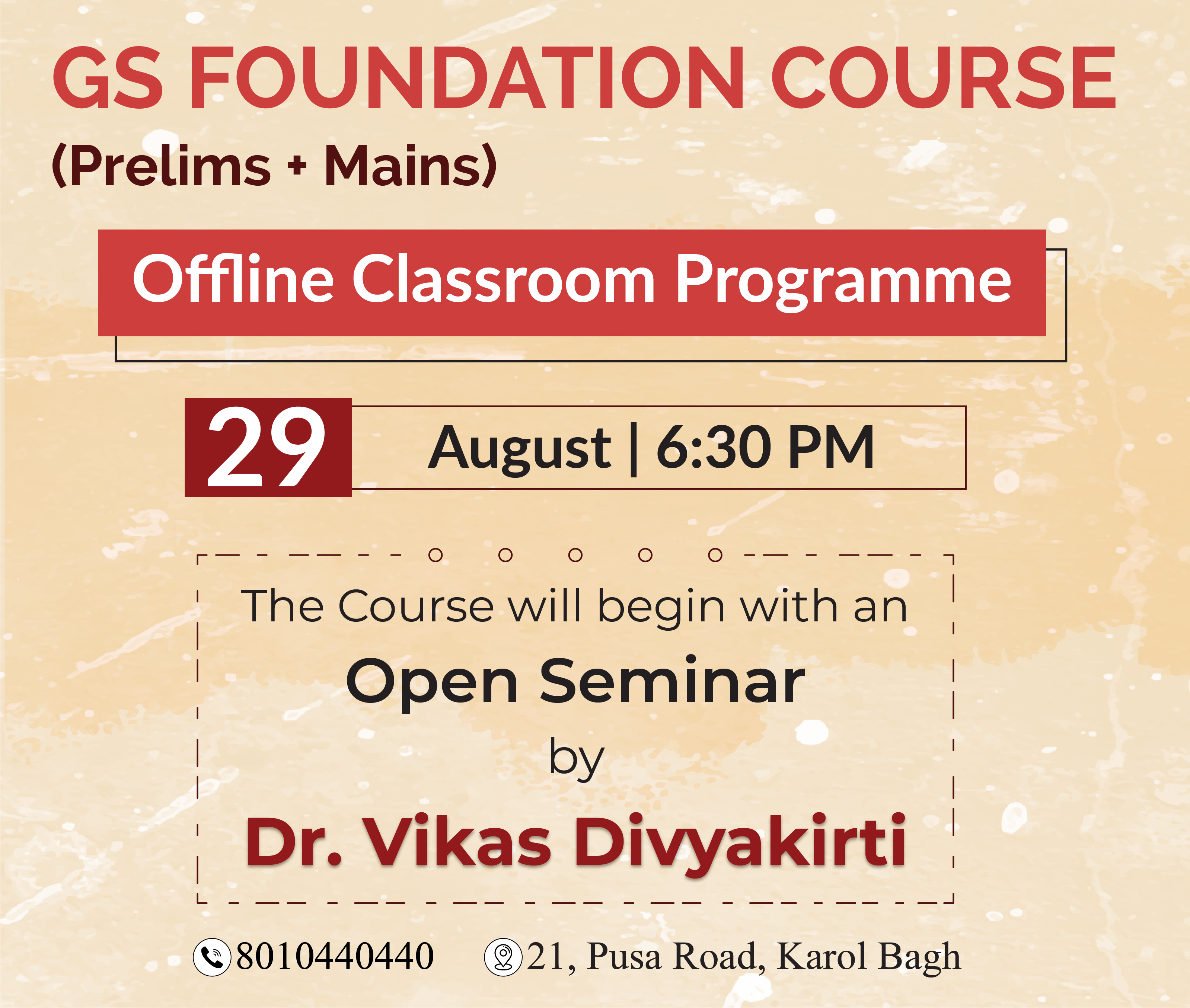
Science & Technology
India’s First Indigenously Developed HFC Bus
For Prelims: National Hydrogen Mission, Green Hydrogen, Hydrogen Fuel Cell, Climate Change Goals, Green Hydrogen/Green Ammonia Policy, FAME India, EV30@30 campaign, Ethanol Blending
For Mains: Hydrogen fuel cell - India’s innovations, National Hydrogen Energy Mission, Climate Change and Green Fuel Transition
Why in News?
Recently, the Union Minister of State of Science & Technology launched India’s first Hydrogen Fuel Cell (HFC) Bus.
- Bisphenol-A pilot plant in CSIR- National Chemical Laboratory (NCL), an important feedstock for the production of epoxy resins, polycarbonate and other engineering plastics was also inaugurated.
What are Hydrogen Fuel Cells (HFC)?
- About:
- A hydrogen fuel cell is an electrochemical device that converts hydrogen into electrical energy.
- Fuel cells work in a similar manner to conventional batteries found in electric vehicles, but they do not run out of charge and don’t need to be recharged with electricity.
- They continue to produce electricity as long as there is a supply of hydrogen.
- One of the most successful fuel cells uses the reaction of hydrogen with oxygen to form water.
- Advantages of HFC Powered Vehicles:
- They produce no tailpipe emissions (emission of gaseous and particulate pollutants) and only emit water vapour and warm air.
- They are more efficient than internal combustion engine vehicles.
- Hydrogen FCEVs have an advantage over battery powered EVs in terms of refuelling time, hydrogen can be refilled in a fuel cell vehicle in a matter of minutes, nearly as fast as an internal combustion engine can be refilled with fossil fuels.
What are the Key Highlights of this Innovation?
- The HFC bus has been developed by the Council of Scientific & Industrial Research (CSIR) and KPIT, an Indian Multinational Corporation.
- The launch of this India’s first truly indigenously developed HFC Bus is in tune with the National Hydrogen Energy Mission.
- The fuel cell utilizes Hydrogen and Air to generate electricity to power the bus and the only effluent from the bus is water. Thus, making it possibly the most environmentally friendly mode of transportation.
- The high efficiency of fuel cell vehicles ensures lower operational costs per kilometre than diesel powered vehicles and can bring freight revolution in India.
What is the National Hydrogen Energy Mission?
- The Union Budget for 2021-22 announced a National Hydrogen Energy Mission (NHM) to draw up a road map for using hydrogen as an energy source.
- It will capitalise on one of the most abundant elements on earth (Hydrogen) for a cleaner alternative fuel option.
- The initiative has the potential of transforming transportation.
- It will:
- Focus on generation of hydrogen from green power resources.
- Link India’s growing renewable capacity with the hydrogen economy.
- The usage of hydrogen will not only help India in achieving its emission goals under the Paris Agreement, but will also reduce import dependency on fossil fuels.
Why is this Innovation Significant?
- This innovation is a part of Prime Minister’s Hydrogen Vision which will ensure self-reliant means of affordable and accessible clean energy, meeting climate change goals, and creating new entrepreneurs and jobs.
- Green hydrogen is an excellent clean energy vector that enables deep decarbonization of difficult-to-abate emissions from the heavy commercial transportation sector among others.
- A single diesel bus plying on long distance routes typically emits 100 tons of CO2 annually and there are over a million such buses in India. About 12-14% CO2 emissions and particulate emissions come from diesel powered heavy commercial vehicles (which are decentralised emissions and hence difficult to capture).
- Fuel Cell vehicles give zero green-house gas emissions. Moreover, their operational cost in rupees per kilometre is lower than diesel powered vehicles.
- By the means of such innovations, India can transition from being a net importer of fossil energy to becoming a net exporter of clean hydrogen energy.
- It will provide India a global leadership in hydrogen space by becoming a large green hydrogen producer and supplier of equipment for green hydrogen.
What is Green Hydrogen?
- About:
- It is produced by splitting water into hydrogen and oxygen using an electrolyzer powered by renewable energy sources such as wind and solar.
- The fuel is considered a game-changer for the energy security of India, which imports 85% of its oil and 53% of gas requirements.
- In February 2022, the Ministry of Power has notified Green Hydrogen/Green Ammonia Policy for production of Green Hydrogen or Green Ammonia using renewable sources of energy.
- Significance:
- Green hydrogen energy is vital for India to meet its Nationally Determined Contribution (INDC) Targets and ensure regional and national energy security, access and availability.
- Green Hydrogen can act as an energy storage option, which would be essential to meet intermittencies (of renewable energy) in the future.
- In terms of mobility, for long distance mobilisations for either urban freight movement within cities and states or for passengers, Green Hydrogen can be used in railways, large ships, buses or trucks, etc.
- Hydrogen has the potential to be the key renewable target in supporting infrastructure as well.
In What Other Ways is the Government of India Promoting Clean Fuel Transition?
- NTPC’s project for hydrogen Fuel Cell Electric Vehicles (FCEV)
- FAME India Scheme
- Green Hydrogen Fuel Cell Electric Vehicle (FCEV) Toyota Mirai
- EV30@30 campaign
- Roadmap for Ethanol Blending in India by 2025
- Amendments to the National Policy on Biofuels, 2018
UPSC Civil Services Examination, Previous Years Questions (PYQs)
Prelims
Q. According to India’s National Policy on Biofuels, which of the following can be used as raw materials for the production of biofuels? (2020)
- Cassava
- Damaged wheat grains
- Groundnut seeds
- Horse gram
- Rotten potatoes
- Sugar beet
Select the correct answer using the code given below:
(a) 1, 2, 5 and 6 only
(b) 1, 3, 4 and 6 only
(c) 2, 3, 4 and 5 only
(d) 1, 2, 3, 4, 5 and 6
Ans: (a)
Q. With reference to ‘fuel cells’ in which hydrogen-rich fuel and oxygen are used to generate electricity, consider the following statements: (2015)
- If pure hydrogen is used as a fuel, the fuel cell emits heat and water as by-products.
- Fuel cells can be used for powering buildings and not for small devices like laptop computers.
- Fuel cells produce electricity in the form of Alternating Current (AC).
Which of the statements given above is/are correct?
(a) 1 only
(b) 2 and 3 only
(c) 1 and 3 only
(d) 1, 2 and 3
Ans: (a)

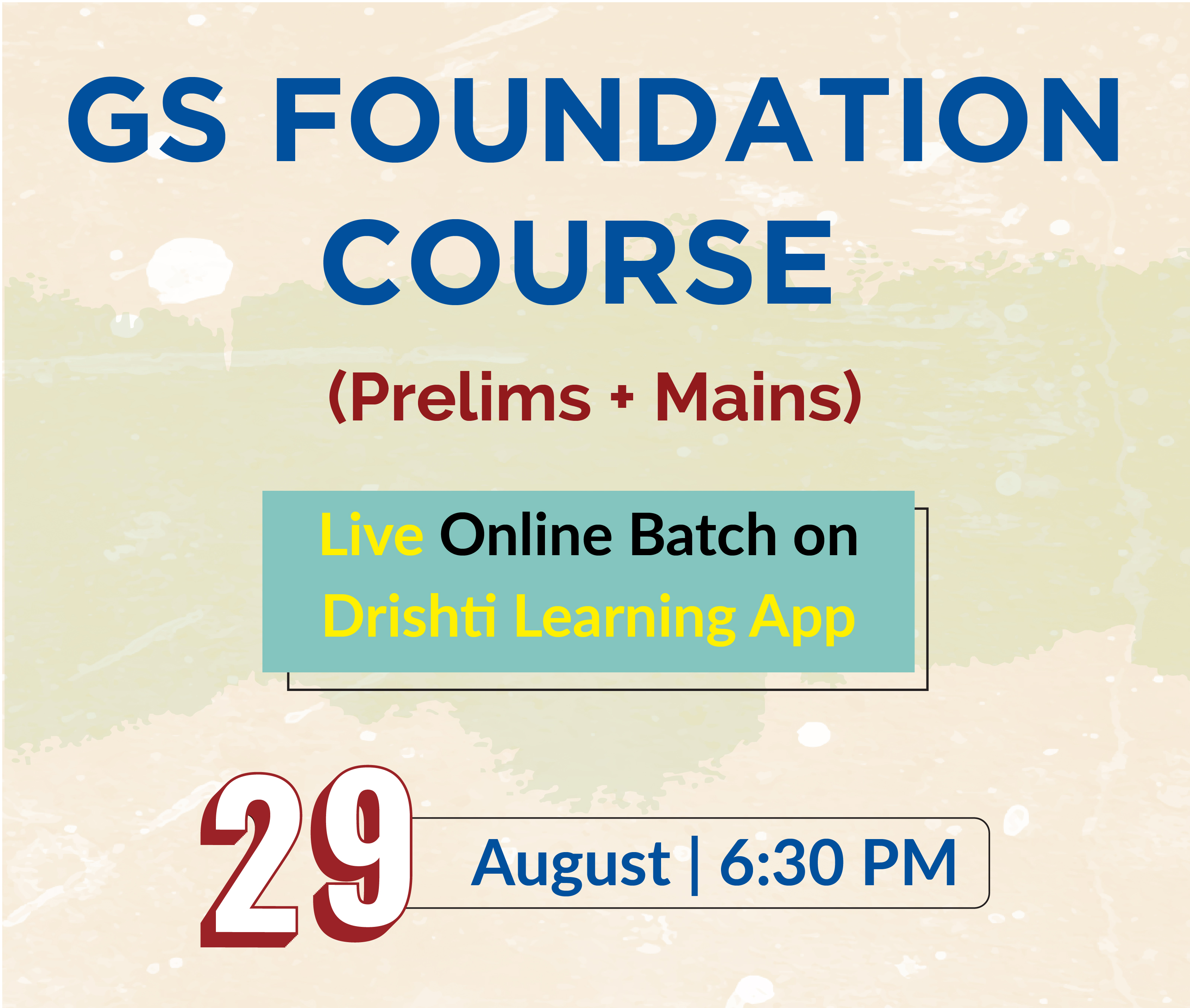
Important Facts For Prelims
Supercharged Biotech Rice
Why in News?
Recently, the Scientists from the Chinese Academy of Agricultural Sciences have shown how a transcriptional regulator can boost grain yields and shorten the growth duration of rice.
- This ‘supercharged biotech rice’ yields 40% more grain.
Why are the Key Highlights of the Report?
- Supercharged Rice:
- The report has pointed out that giving a Chinese rice variety a second copy of one of its own genes has boosted its yield by up to 40%.
- When a second copy of a single gene (called OsDREB1C) is added to rice, it improves photosynthesis and nitrogen use, speeds up flowering and absorbing nitrogen more efficiently — offering larger and more abundant grains.
- The change helps the plant absorb more fertilizer, boosts photosynthesis, and accelerates flowering, all of which could contribute to larger harvests.
- The researchers added the same ‘native’ gene again, and not any foreign one (as in the case of BT cotton or BT soybean). This method is best described as genetic modulation.
- Gene modulation refers to the process of temporarily altering gene expression levels without making heritable changes to the underlying cellular DNA.
- It is not a genetic modification (GM) and neither is the result of a transgenic plant, carrying elements from another donor.
- Significance in India’s Context:
- This report is particularly relevant to India, which must aim to continue its world position in the production of rice and marketing.
- India is the world’s largest exporter of rice. It exported 18.75 million metric tons to over 150 countries during the year 2021-22, thereby earning $6.11 billion.
- Vietnam was the second largest producer of rice.
- With growing demand in the coming years, strategies should be found to increase the production and export of rice and it has to be much more than the 18.75 million tons for India to continue and expand its role as the world’s largest producer and exporter of rice.
- India has some excellent rice researchers located in Andhra Pradesh, Karnataka, Punjab and Haryana, and genetic engineers in several laboratories across the country.
- The Ministry of Agriculture & Farmers’ Welfare can come together with the Department of Biotechnology (DBT) and nutritionists from the Indian Council of Medical Research (ICMR) can support these researchers to augment India’s role as the major rice exporter in the world.
What are the Important Points about Cultivation of Rice?
- It is a kharif crop which requires high temperature, (above 25°C) and high humidity with annual rainfall above 100 cm.
- Rice is grown in the plains of north and north-eastern India, coastal areas and the deltaic regions.
- Deep clayey and loamy soil is the ideal type of soil for growing rice.
- Leading producer states of rice are West Bengal, Uttar Pradesh, and Punjab.
- High yielding states are Punjab, Tamil Nadu, Haryana, Andhra Pradesh, Telangana, West Bengal and Kerala.
- In southern states and West Bengal, the climatic conditions allow the cultivation of two or three crops of rice in an agricultural year.
- In states like Assam, West Bengal and Odisha, three crops of paddy are grown in a year; these are Aus, Aman and Boro.
- High yielding states are Punjab, Tamil Nadu, Haryana, Andhra Pradesh, Telangana, West Bengal and Kerala.
- It is the staple food crop of the majority of Indian people.
- India is the second largest producer of rice in the world. About one-fourth of the total cropped area in India is under rice cultivation.
- National Food Security Mission, Hybrid Rice Seed Production and Rashtriya Krishi Vikas Yojana are a few government initiatives to support rice cultivation.
UPSC Civil Services Examination, Previous Year Questions (PYQs)
Q. Consider the following crops: (2013)
- Cotton
- Groundnut
- Rice
- Wheat
Which of these are Kharif crops?
(a) 1 and 4 only
(b) 2 and 3 only
(c) 1, 2 and 3
(d) 2, 3 and 4
Ans: (c)


Important Facts For Prelims
Gross State Domestic Product
Why in News?
Recently, the Union Ministry of Statistics and Programme Implementation has released figures for the Gross State Domestic Products.
- The economies of 19 states and Union Territories exceeded their pre-Covid levels, with 7 recording double-digit growth rates during 2021-22.
- The growth rates of 11 states including Gujarat and Maharashtra were not available for 2021-22.
What are the Key Findings?
- Size of the Gross State Domestic Product (GSDP) of the 19 states and UTs had contracted or recorded a negligible growth during 2020-21 — the year when the government had imposed a nationwide lockdown in view of the Covid-19 outbreak.
- These 19 states and UTs are Andhra Pradesh, Rajasthan, Bihar, Telangana, Delhi, Odisha, Madhya Pradesh, Haryana, Karnataka, Tripura, Sikkim, Himachal Pradesh, Meghalaya, Jharkhand, Tamil Nadu, Jammu and Kashmir, Punjab, Uttarakhand and Puducherry.
- Their economies (GSDP) bounced back in 2021-22 and exceeded their pre-Covid (2019-20) levels.
- Kerala and Uttar Pradesh are the only exceptions in 2021-22 which recorded GSDP below the pre-Covid levels.
- Andhra recorded the highest growth of 11.43%, Puducherry recorded the lowest at 3.31%.
- Besides Andhra Pradesh, five other states and one UT recorded double digit growth in 2021-22:
- Rajasthan: 11.04%
- Bihar: 10.98%
- Telangana: 10.88%
- Odisha: 10.19%
- Madhya Pradesh: 10.12%
- Delhi: 10.23%
- Sharp jump in the GSDP of some states is due to the base effect, the general trend mirrors the post-pandemic economic recovery.
- In 2021-22, India’s GDP expanded at 8.7% against a 6.6% contraction in 2020-21.
What is Gross State Domestic Product?
- About:
- Gross State Domestic Product (GSDP) is a measure in monetary terms, the sum total volume of all finished goods and services produced during a given period of time, usually a year, within the geographical boundaries of the State, accounted without duplication.
- Significance:
- Gross State Domestic Product (GSDP) or State Income is the most important indicator for measuring the economic growth of a State.
- These estimates of the economy, over a period of time, reveal the extent and direction of the changes in the levels of economic development.
- The State Domestic Product is classified under three broad sectors such as Primary sector, Secondary sector and Tertiary sector and is compiled economic activity wise as per the methodology prescribed by the National Accounts Division, National Statistical Office, Ministry of Statistics & Programme Implementation, Govt. of India.
- In 2015, NSO introduced the new series of national accounts statistics with base year 2011-12, replacing the previous series with base year 2004-05.
- Gross State Domestic Product (GSDP) or State Income is the most important indicator for measuring the economic growth of a State.
UPSC Civil Services Examination, Previous Year Questions (PYQs)
Q. With reference to Indian economy, consider the following statements: (2015)
- The rate of growth of Real Gross Domestic Product has steadily increased in the last decade.
- The Gross Domestic Product at market prices (in rupees) has steadily increased in the last decade.
Which of the statements given above is/are correct?
(a) 1 only
(b) 2 only
(c) Both 1 and 2
(d) Neither 1 nor 2
Ans: (b)
Explanation:
- Gross Domestic Product (GDP) is the monetary value of all the final goods and services produced within a country’s borders in a specific time period, generally 1 year. It is a broad measurement of a nation’s overall economic activity.
- Real Gross Domestic Product is an inflation-adjusted measure that reflects the value of all goods and services produced by an economy in a given year, expressed in base-year prices.
- The rate of growth of real GDP has not steadily increased in the last decade. It has fluctuated due to various international and domestic economic pressures. Hence, statement 1 is not correct.
- The GDP at market prices of India has steadily increased in the last decade from around 900 billion USD in 2005 to 2.1 trillion USD in 2015. As of 2020 India’s GDP is 2.63 trillion USD. Hence, statement 2 is correct.
- Therefore, option (b) is the correct answer.


Important Facts For Prelims
GI Tag for Mithila Makhana
Why in News?
The government has recently awarded the Geographical Indication (GI) tag to Mithila Makhana.
- The move is expected to help growers get the maximum price for their premium produce.
What is Understood by a Geographical Indication (GI) Tag?
- About:
- Geographical Indication (GI) is an indication used to identify goods having special characteristics originating from a definite geographical territory.
- The Geographical Indications of Goods (Registration and Protection) Act, 1999 seeks to provide for the registration and better protection of geographical indications relating to goods in India.
- It is governed and directed by the WTO Agreement on Trade-Related Aspects of Intellectual Property Rights (TRIPS).
- It was decided and also stated under Articles 1 (2) and 10 of the Paris Convention that the protection of industrial Property and Geographical Indication are elements of Intellectual Property.
- It is primarily an agricultural, natural or a manufactured product (handicrafts and industrial goods).
- Validity:
- This tag is valid for a period of 10 years following which it can be renewed.
- Significance:
- Once a product gets this tag, any person or company cannot sell a similar item under that name.
- GI registration of a product provides it legal protection and prevention against unauthorised use by others.
- GI tag helps in promoting the exports of the product.
- It also provides comfort to customers about the authenticity of that product.
- GI Registration:
- There is a proper process of registration of GI products which includes filing of application, preliminary scrutiny and examination, show cause notice, publication in the geographical indications journal, opposition to registration, and registration.
- Any association of persons, producers, organisation or authority established by or under the law can apply.
- The applicant must represent the interest of the producers.
- GI Tag Products:
- Some famous goods which carry this tag include Basmati rice, Darjeeling Tea, Chanderi Fabric, Mysore Silk, Kullu Shawl, Kangra Tea, Thanjavur Paintings, Allahabad Surkha, Farrukhabad Prints, Lucknow Zardozi, Kashmir Saffron and Kashmir Walnut Wood Carving.
What do we need to Know about Mithila Makhana?
- Mithila Makhana or Makhan (botanical name: Euryale ferox Salisb.) is a special variety of aquatic fox nut cultivated in Mithila region of Bihar and Nepal.
- Makhana is the one of the three prestigious cultural identities of Mithila.
- Pan, Makhan and Machh (fish) are the three prestigious cultural identity of Mithila.
- It is also very famous in Kojagara festival of Maithil Brahmins celebrated for newly married couples.
- Makhana contains protein and fiber, along with micronutrients like calcium, magnesium, iron, and phosphorus.
What Other Products of Bihar have GI Tag?
- GI tagging of products in Bihar has helped in brand building, creating local employment, creating a regional brand, generating spin-off effects in tourism, preserving traditional knowledge and traditional cultural expressions and conserving biodiversity.
- Many products from Bihar have been granted GI tag such as:
- Bhagalpuri Jardalu Mango
- Katarni Rice
- Magahi Betel (Paan)
- Shahi Litchi
- Silao Khaja (a delicacy)
- Madhubani Painting
- Pipli Work
- In June 2022, the Geographical Indications (GI) Registry in Chennai accepted the initial proposal for conferring the GI tag to Nalanda's 'Bawan Buti' Saree, Gaya's 'Pattharkatti stone craft’ and Hajipur's 'Chiniya' variety of banana.
- There have also been proposal for providing GI Tag to three sweet delicacies of Bihar - Khurma, Tilkut and Balushahi.
UPSC Civil Services Examination, Previous Years Questions (PYQs)
Prelims
Q. Which of the following has/have been accorded ‘Geographical Indication’ status? (2015)
- Banaras Brocades and Sarees
- Rajasthani Daal-Bati-Churma
- Tirupathi Laddu
Select the correct answer using the code given below:
(a) 1 only
(b) 2 and 3 only
(c) 1 and 3 only
(d) 1, 2 and 3
Ans: (c)
Exp:
- A Geographical Indication (GI) is a sign used on products that have a specific geographical origin and possess qualities or a reputation that are due to that origin.
- Darjeeling tea was the first product in India to get a GI tag.
- Banaras Brocades and Sarees and Tirupathi Laddu have got GI tag while Rajathan’s Daal-Baati-Churma does not. Hence, 1 and 3 are correct. Therefore, option (c) is the correct answer.
Q. India enacted the Geographical Indications of Goods (Registration and Protection) Act, 1999 in order to comply with the obligations to (2018)
(a) ILO
(b) IMF
(c) UNCTAD
(d) WTO
Ans: (d)
Exp:
- Geographical indications (GIs) are a type of intellectual property (IP). The World Trade Organisation (WTO) recognises intellectual property rights under TRIPS (TradeRelated Aspects of Intellectual Property Rights) Agreement.
- Under Article 22(1) of the TRIPS Agreement, the GIs are defined as “indications which identify a good as originating in the territory of a Member, or a region or locality in that territory, where a given quality, reputation or other characteristic of the good is essentially attributable to its geographic origin”.
- Therefore, option (d) is the correct answer.


Important Facts For Prelims
Drought Tolerant Crop
Why in News?
Recently, a study has noted that a common weed named “Portulaca oleracea”, commonly known as purslane, offers important clues about creating drought-tolerant crops in a world beset by climate change.
- Yale University scientists integrated two metabolic pathways to produce a novel type of photosynthesis that enables the weed to withstand drought while remaining highly ‘productive’.
What do we know about Purslane?
- About:
- Purslane possesses evolutionary adaptations that allow it to be both highly productive and drought tolerant.
- Description:
- It is mostly an annual, but it may be perennial in the tropics.
- Stems are glabrous, fleshy, purplish-red to green, arising from a taproot, often prostrate, forming mats.
- Distribution:
- It is most common in the temperate and subtropical regions, although it extends into the tropics and higher latitudes.
- Habitat:
- It is common in fields, gardens, vineyards, lawns, driveways, dunes, beaches, salt marshes, waste areas, eroded slopes, bluffs and riverbanks.
- Species Affected:
- It competes for resources with many field crops, particularly herbaceous species that are germinating or growing in competition.
- Affected crops include: asparagus, red beets, celery, crucifers, cotton, maize, onions, potatoes, rice, soyabeans, sugarcane, tomatoes and wheat.
- Ecology:
- It has a wide tolerance of photoperiod, light intensity, temperature, moisture and soil type.
- Seeds germinate under conditions that enhance the survival of seedlings.
- The species is self-compatible.
What are the Key Highlights of the Study?
- Plants have independently evolved various mechanisms to improve photosynthesis, the process by which green plants use sunlight to synthesise nutrients from carbon dioxide and water.
- Corn and sugarcane evolved C4 photosynthesis, which allows the plant to remain productive under high temperatures.
- Succulents such as cacti and agaves possess another type called CAM photosynthesis, which helps them survive in deserts and other areas with little water.
- Both C4 and CAM serve different functions but recruit the same biochemical pathway to act as ‘add-ons’ to regular photosynthesis.
- The study conducted a spatial analysis of gene expression within the leaves of purslane and found that C4 and CAM activity is totally integrated.
- They operate in the same cells, with products of CAM reactions being processed by the C4 pathway.
- This system provides unusual levels of protection for a C4 plant in times of drought.
- They operate in the same cells, with products of CAM reactions being processed by the C4 pathway.
What are C3, C4, and CAM plants?
- C3 Cycle:
- It is also known as Calvin Cycle.
- It is a cyclic reaction occurring in the dark phase of photosynthesis.
- In this reaction, CO2 is converted into sugars and hence it is a process of carbon fixation.
- The Calvin cycle was first observed by Melvin Calvin in chlorella, unicellular green algae. Calvin was awarded Nobel Prize for this work in 1961.
- Since the first stable compound in Calvin cycle is a 3 carbon compound (3 phosphoglyceric acid), the cycle is also called as C3 cycle.
- C3 plant examples: Wheat, Oats, Rice, Sunflower, Cotton etc.
- C4 Plants:
- The C4 plants show a different type of leaf anatomy.
- The chloroplasts are dimorphic in nature. In the leaves of these plants, the vascular bundles are surrounded by bundle sheath of larger parenchymatous cells.
- These bundle sheath cells have chloroplasts.
- These chloroplasts of bundle sheath are larger, lack grana and contain starch grains.
- The chloroplasts in mesophyll cells are smaller and always contain grana. This peculiar anatomy of leaves of C4 plants is called Kranz anatomy.
- Examples of C4 plants: Maize, Sugarcane, Amaranthus.
- CAM Cycle:
- CAM is a cyclic reaction occurring in the dark phase of photosynthesis in the plants of Crassulaceae.
- It is a CO2 fixation process wherein the first product is malic acid.
- It is the third alternate pathway of Calvin cycle, occurring in mesophyll cells.
- CAM plants are usually succulents and they grow under extremely xeric conditions. In these plants, the leaves are succulent or fleshy.
- In these plants, the stomata remain open during night and closed during day time.
- The CAM plants are adapted to photosynthesis and survival under adverse xeric conditions.
- Examples: Sedum, Kalanchoe, Pineapple, Opuntia, Snake plant.
- CAM is a cyclic reaction occurring in the dark phase of photosynthesis in the plants of Crassulaceae.


Important Facts For Prelims
MoU for Cooperation on Satellite- Based Naval Applications
Why in News?
Recently, Memorandum of understanding (MoU) has been signed between the Space Applications Centre (ISRO) and the Indian Navy on data sharing and cooperation on Satellite-based Naval Applications in Oceanology and Meteorology.
What are the Key Highlights of The MoU?
- It will enhance collaboration and would initiate a common platform of mutual cooperation.
- The scientific advancements by Space Applications Centre would be synergized with the Indian Naval efforts to keep the nation's defence in step with rapid development in the field of Satellite Data retrieval and applications.
- Cooperation would include various dimensions:
- Sharing of non-confidential observational data.
- Operational exploitation of Space Applications Centre (SAC)-generated weather products and provisioning of Subject Matter Experts (SME) for the processing of satellite data towards the development of new tools.
- Providing Calibration and validation of ocean models.
What is Space Applications Centre?
- About:
- Space Applications Centre is a major research and development centre of the Indian Space Research Organisation (ISRO).
- It is situated in Ahmedabad and performs multi-disciplinary activities.
- The core competence of the Centre lies in the development of space-borne and air-borne instruments/payloads and their applications for national development and societal benefits.
- These applications are in diverse areas and primarily meet the communication, navigation, and remote sensing needs of the country.
- Space Applications Centre is a major research and development centre of the Indian Space Research Organisation (ISRO).
- Achievements:
- The Centre also contributed significantly to scientific and planetary missions of ISRO like Chandrayaan-1, Mars Orbiter Mission, etc.
- The communication transponders developed at this Centre for Indian National Satellite (INSAT) and Geo Synchronous Satellite (GSAT) series of satellites are used by the government and private sector for VSAT, DTH, Internet, broadcasting, telephones, etc.
UPSC Civil Services Examination Previous Year Question (PYQ)
Prelims
Q. Satellites used for telecommunication relay are kept in a geostationary orbit. A satellite is said to be in such an orbit when: (2011)
- The orbit is geosynchronous.
- The orbit is circular.
- The orbit lies in the plane of the Earth’s equator.
- The orbit is at an altitude of 22,236 km.
Select the correct answer using the codes given below:
(a) 1, 2 and 3 only
(b) 1, 3 and 4 only
(c) 2 and 4 only
(d) 1, 2, 3 and 4
Ans: (a)
Exp:
- Satellites used for telecommunication relay are kept in a geostationary orbit. If this satellite is observed from a particular position on the ground, it remains stationary at the same spot. It plays an instrumental role in global communications and weather forecasting.
- A geo-synchronous orbit is an orbit around the Earth, which has an orbital period that matches the Earth’s rotation, i.e., 24 hours. A geo-stationary orbit is a type of circular geo-synchronous orbit, which encircles the equator (i.e., directly above the equator). Hence, 1 is correct.
- As the geo-stationary orbit lies directly over the equator and in the same plane as that of the Earth’s equator, it encircles the Earth in a circular orbit. Hence, 2 and 3 are correct.
- A geostationary orbit is 35,786 km (i.e., 22,236 miles) above the Earth’s surface. Hence, 4 is not correct. Therefore, option (a) is the correct answer


Important Facts For Prelims
Hunger Stones
Why in News?
Recently, Europe was suffering from the worst drought, therefore rivers have dried up and there is the emergence of Hunger Stones.
What are Hunger Stones?
- About:
- They are the common hydrological marker in central Europe and date back to the pre-instrumental era.
- They serve as reminders to today’s generation of previously dire water shortages.
- Usually found in Europe, they were embedded into rivers by our ancestors when rivers subdued to severe levels subsequently causing famine and food shortages.
- Many of the hunger stones found have unique carvings on them that seek to remind the next generation that if water levels get to this point, food availability will be affected.
- These stones were embedded into the rivers in Germany & other german settlements from the 15th to 19th centuries.
- They are the common hydrological marker in central Europe and date back to the pre-instrumental era.
- Inscriptions:
- It expressed that drought had brought a bad harvest, lack of food, high prices, and hunger for poor people,




